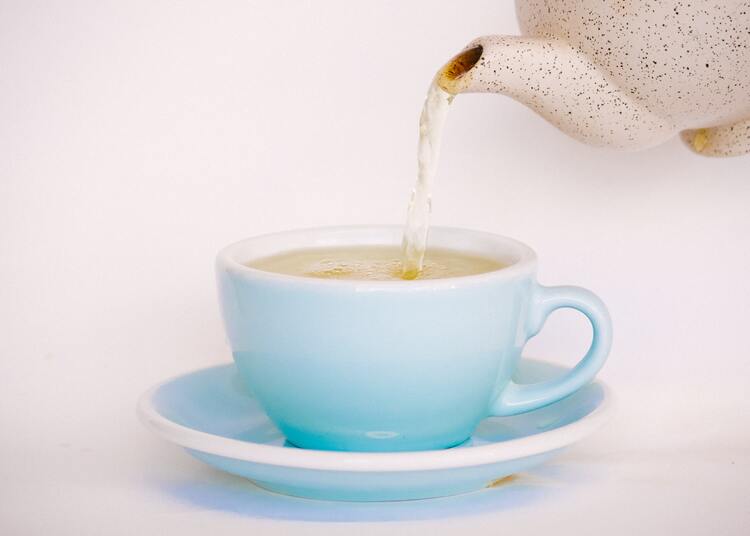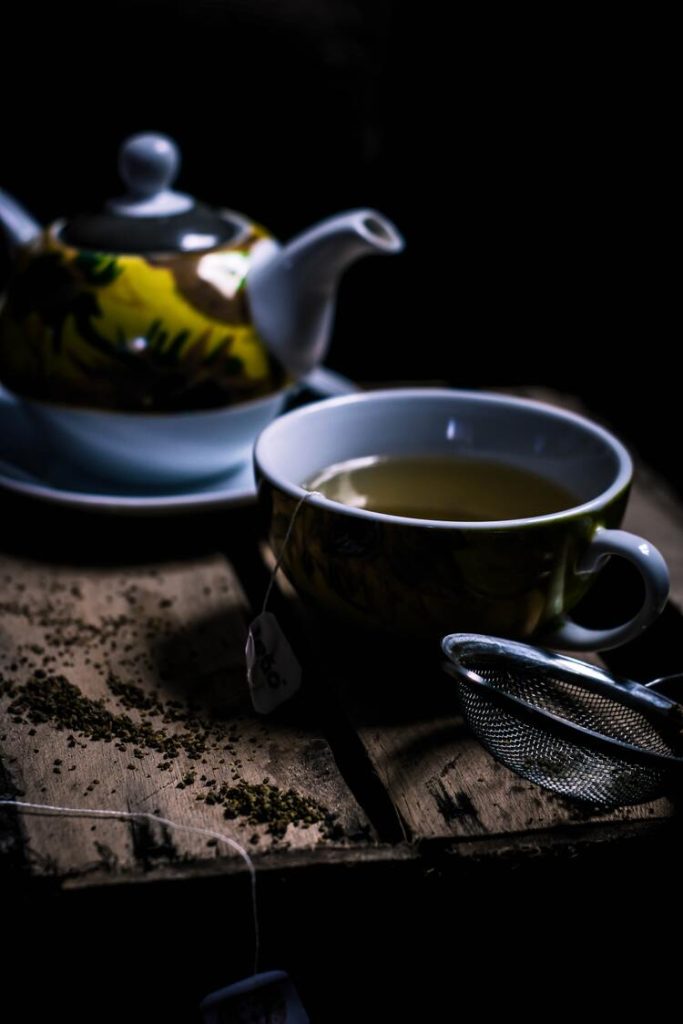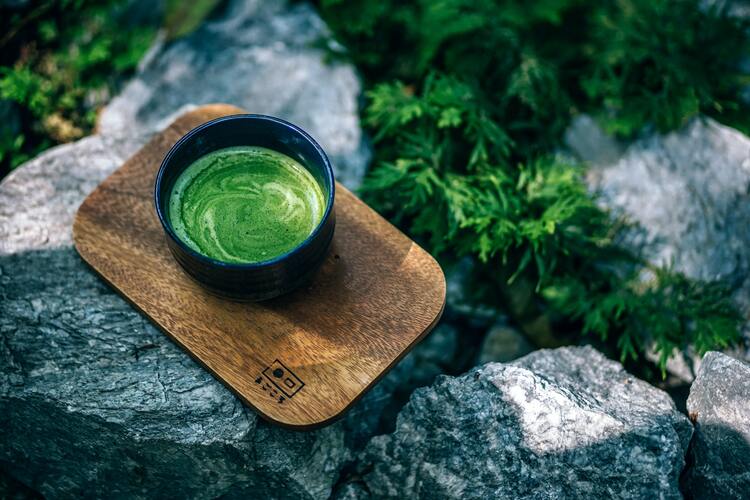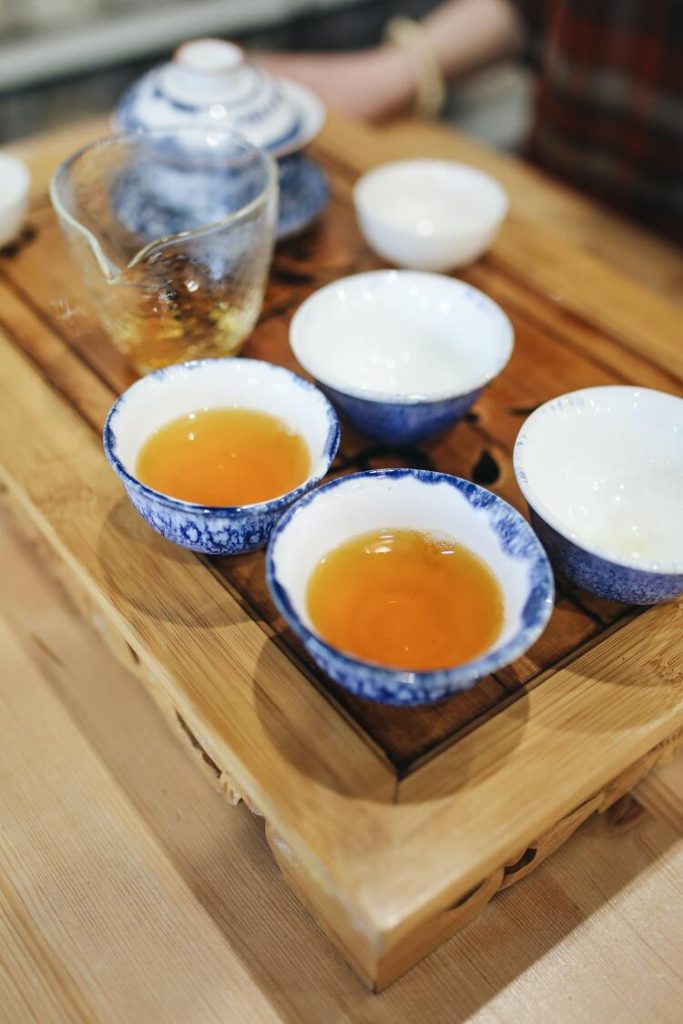Have you ever wondered what is the process of making green tea? This is a fascinating process that has been around for centuries. There is so much to explore!
The processing of green tea involves several steps, including withering, rolling, and drying. Each step is crucial to creating the unique flavor and aroma that green tea is known for.
Keep reading since we have a lot of information to share about the process of making green tea.
Please note: This article contains affiliate links, meaning I may earn a commission if you make a purchase by clicking a link. Of course, this comes at no extra cost to you and helps me keep offering readers solid information.

The Process of Making Green Tea
Several steps are involved in processing tea leaves to obtain priced green tea. Each step requires careful attention to detail to ensure the tea has the desired flavor and aroma. Please keep in mind we are presenting a high-level overview. Different tea-making regions may introduce specific methods and techniques at any of the steps presented.
Cultivation
The first step in tea processing is cultivation. The tea plant, or Camellia sinensis, is a small evergreen tree native to China. There are many different cultivars of the tea plant, each with unique characteristics. The terroir, or the soil and climate in which the tea plant grows, also plays a significant role in determining the flavor and aroma of the tea.
Tea cultivation involves carefully pruning and trimming the tea bushes to ensure that they produce high-quality leaves. When the tea leaves reach maturity, they are ready for harvesting.
Plucking (or Harvesting)
Plucking involves selectively picking the young and tender tea leaves and buds, usually by hand. Skilled tea pluckers carefully choose the top two leaves and a bud with the highest concentration of desirable compounds.
The plucking can be done in different ways, such as the “bud and two leaves” method or the “flush and two leaves” method, depending on the tea type and desired quality.
The term “flush” refers to the growth cycle of the tea plant, which is divided into different stages. Each flush is characterized by the emergence of new growth, typically consisting of a bud and two young leaves.
In the flush and two-leaf method, tea pluckers visually assess the growth stage of the tea plant to identify the appropriate flush for harvesting. They look for the specific arrangement of the bud and two leaves on the stem. The pluckers carefully pluck this flush, ensuring they take only the top two leaves and the bud while leaving the lower leaves and stem intact.
Withering
After harvesting, the tea leaves undergo withering to reduce their moisture content. The leaves are spread out on large trays or racks in a well-ventilated area, or in some cases, withering machines are used. This step allows the leaves to lose excess water, making them more pliable for subsequent processing.
Fixation
Fixation is crucial in preserving the green color and preventing oxidation (darkening of the leaves). The withered leaves are quickly exposed to high heat through steaming or pan-firing.
Steaming is commonly used in Japan, while pan-firing is more prevalent in China. Applying heat denatures the enzymes responsible for oxidation and helps retain the tea’s natural green color and fresh flavor.
Rolling
After fixation, the tea leaves are rolled, which helps shape and further break down the cellular structure. Rolling is traditionally done by hand or using rolling machines that mimic hand rolling. This process releases some of the tea’s natural oils, enhancing the flavor and aroma.
Drying
The rolled tea leaves are dried to remove any remaining moisture. Drying can be accomplished through various methods, including air drying, oven drying, or specialized drying machines. The leaves are carefully monitored during drying to prevent overheating or excessive moisture loss.
Sorting and Grading
Once the tea leaves are fully dried, they undergo sorting and grading to classify them based on size, shape, and quality. Tea leaves are usually sorted by size using sieves or mesh screens. Different grades of green tea are determined based on the leaf appearance, such as whole leaf, broken leaf, or fannings.
Packaging
The final step involves packaging the green tea for distribution and consumption. The tea may be packed in various forms, such as loose-leaf tea, tea bags, or compressed tea bricks. The packaging is done to preserve the freshness, aroma, and quality of the tea.
Throughout the entire green tea processing process, it is essential to carefully control the heat and moisture levels to prevent oxidation from occurring. Oxidation can cause the tea to lose its flavor and aroma.
Additionally, enzymes, chlorophyll, polyphenols, tannins, and proteins all play a role in the processing of green tea. By carefully controlling these factors, you can produce a high-quality green tea that will delight your taste buds.

The Process of Making Green Tea – Post-Processing
Some green teas undergo post-processing techniques to enhance their flavor, aroma, or appearance after the initial processing steps. These additional steps may vary depending on the specific type of green tea and regional preferences.
Here are a few examples of post-processing techniques used in the production of green tea:
Roasting
In some cases, green teas are subjected to a roasting process after the initial drying step. Roasting is typically done in a pan or drum, and it helps to remove moisture further, develop unique flavors, and add depth to the tea. This technique is commonly employed in Chinese green teas, such as Longjing (Dragon Well) tea.
Aging
Similar to other teas, certain green teas can be aged to enhance their flavor and aroma. Controlled storage conditions are provided, allowing the tea leaves to change over time gradually. Aging can mellow the tea’s taste, reduce bitterness, and introduce unique characteristics. Some green teas benefit from aging, like Lu An Gua Pian (Lu’an Guapian Tea or Lu’an Melon Seed Tea).
Blending
Tea blending involves combining different types or batches of green tea to create unique flavor profiles or to maintain consistency in taste. Blending can be done to balance flavors, add complexity, or create signature blends. This practice is often seen in commercial tea production where consistent taste is desired.
Scenting
Some green teas, such as Jasmine tea, undergo a post-processing technique called scenting. Jasmine flowers are layered with tea leaves, and their fragrance is imparted to the tea through natural absorption. This process may be repeated multiple times to achieve the desired level of aroma. Scenting is commonly associated with Chinese green teas.
Grinding
In certain instances, green teas are ground into fine powder. This technique is mainly used for matcha, a powdered green tea widely consumed in Japan. The tea leaves are shade-grown, harvested, steamed, dried, and then stone-ground into a fine powder. Grinding the entire leaf allows for consuming the tea’s nutrients and flavors.
In the case of a ceremonial grade match (the highest grade), the stems and veins are removed from the tea leaves before grinding.

Different Green Tea Varieties
Green tea is a popular beverage that comes in many different varieties. Each type of green tea has its unique flavor, aroma, and processing method. This section will explore some of the most common green tea varieties.
Japanese Green Teas
Japanese green teas are known for their vibrant green color and grassy flavor. The most popular Japanese green tea is sencha, made from the tea plant’s top leaves. Sencha is steamed to stop oxidation and then rolled into thin, needle-like shapes.
Another popular Japanese green tea is matcha, made from finely ground green tea leaves. Matcha is used in traditional Japanese tea ceremonies and has a rich, earthy flavor.
Chinese Green Teas
Chinese green teas are known for their delicate flavors and aromas. One of the most popular Chinese green teas is Longjing, also known as Dragonwell. Longjing is pan-fired to stop oxidation and then hand-rolled into flat, sword-like shapes.
Another popular Chinese green tea is Bi Luo Chun, made from the tea plant’s tender buds and leaves. Bi Luo Chun is pan-fired and then shaped into small spirals.
Oolong Tea
Oolong tea is a partially oxidized tea that falls between green and black tea. Oolong tea can have a wide range of flavors and aromas, depending on the degree of oxidation and processing method.
One popular oolong tea is Tie Guan Yin, known for its floral aroma and sweet taste. Tie Guan Yin is rolled into tight balls and then roasted to bring out its unique flavor.
To discover more about different green tea varieties, read my dedicated article.

The Flavor and Aroma of Green Tea
When it comes to green tea, the flavor and aroma are some of the most critical aspects people consider. Green tea has a unique taste that is both refreshing and invigorating. The aroma of green tea is also quite distinct and can vary depending on the specific type of tea and how it is processed.
One of the most common flavors associated with green tea is a sweet, grassy taste. This is because green tea is made from unoxidized tea leaves, giving it a lighter, fresher taste than black tea. Some green teas may also have floral notes, such as jasmine or rose, adding a delicate sweetness to the overall flavor.
The aroma of green tea can also be quite complex. Essential oils from flowers, herbs, and spices can infuse the tea leaves during processing, resulting in various scents. Some green teas may have a floral aroma, while others may have a more fruity or jam-like scent.
To fully appreciate the flavor and aroma of green tea, it’s important to pay attention to the brewing process. The water temperature, steeping time, and amount of tea leaves used can all affect the final taste and smell of the tea. For example, using too hot water can result in a bitter taste, while steeping the tea for too long can make it taste overly astringent.

Green Tea Recommendations
We always recommend visiting your nearest tea specialist in order to obtain high-quality products and deepen your tea knowledge. Besides, you may be able to try several tea brands before making a purchase decision.
Since we know not everybody has the time to stop by a local tea provider, here are our top green tea recommendations:
Green Tea leaves Sencha, JAS Certified Organic, Japanese Tea


Ocha & Co. Organic Green Tea – Kukicha Green Tea from Stems & Leaf

Ocha & Co. Hojicha Tea – Japanese Organic Loose Leaf Green Tea

FullChea – Longjing Tea – Dragonwell Tea – Chinese Green Tea Loose Leaf

Cha Wu-[B] BiLuoChun Green Tea

Numi Organic Tea Gunpowder Green

Hope you have enjoyed the article and the process of making green tea! See you next time!
How well-versed are you in the process of making green tea?
More About Green Tea
What Does Green Tea Taste Like?
What Does Sencha Tea Taste Like?